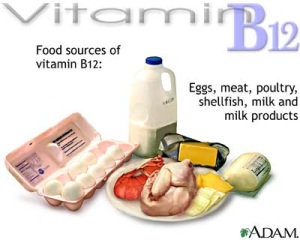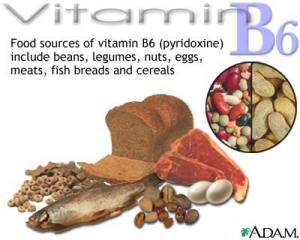From the Desk of Dr. Hildy
© October 9, 2013
Questions – Contact:
ihs-drhildy@sbcglobal.net
FOLIC ACID and Generations to Come
Recently an article by Ms. Mae Chan entitled, “Folic Acid Deficiencies May Impact Up to Five Generations Later” was recently published in Cell.com © (October 6, 2013). The entire article is stated below my article. The aspect of the impact of epigenetic risk markers for a deficiency of folic acid is very true, but remember if you eat the proper foods rich in folic acid, reduce body exposure to hazardous materials, heavy metals and other toxicants and keep up a good abundance of glutathione rich foods and natural sources, the body will become over-joyed with its ability to protect and nourish your temple – the HUMAN BODY.
Folic acid has been recognized as one of the B vitamins necessary for good nutrition. Its chemical formula is C19H19N706 and it is slightly soluble in water and easily oxidized in acid and sunlight. It helps in the growth of a healthy blood system and aids the intestinal tract to stay healthy. It has been indicated that up to three milligrams daily would be an adequate amount. The bacteria in the intestines will ordinarily work to combine or synthesize various elements together to form folic acid. When one is exposed to pesticides, heavy metals, mold and their mycotoxins and may other toxic substances this natural process will become interrupted and the loss of natural gut flora will follow. As more natural gut flora is lost the more symptoms of ill health one will have over time, which will lead to chronic disease patterns.
A deficiency of this B vitamin may have serious results for the expectant mother. The condition of a congenital fissure or split in the roof of the mouth, known as cleft palate may be the result of a deficiency in folic acid substances. This is also found in spina bifida and children born with no eyes as found in the early cases of exposure to a pesticide known a benomyl in the late 1980’s and early 1990’s in the USA. The pesticide inhibited AMOG enzyme as a result of reduced folic acid and vitamin B12 levels with acetyl cholinesterase activities. Also, although it is not certain, this deficiency may contribute to other conditions of the newborn child such as horseshoe kidneys (union of the kidneys at the lower ends) a, hydrocephalus (fluid within the cranium), harelip, and heart and brain defects.
Anemia is one of the conditions that may result from a deficiency in folic acid. Individuals taking such drugs as aminopterin, streptomycin and the sulfa drugs or exposed to carbamate pesticides (Example: benomyl or methomyl) must be warned that these drugs destroy folic acid.
The condition known as sprue, where there is a sore mouth, ingestion and diarrhea, may also result from the lack of folic acid. There may also be the result of a shortage of the large red blood corpuscles, the condition known as megaloblastic anemia.
M. Ebbing, et. al., “Cancer incidence and mortality after treatment with folic acid and vitamin B12” (2009) in the Journal of American Medical Association evaluated the effects of treatment with B vitamins on cancer outcomes and all-caused mortality in 2 randomized controlled trials. During the study treatment, median serum folate concentration increased more than 6-fold among participants given folic acid. The results were mainly driven by an increased lung cancer incidence in participants who received folic acid plus vitamin B-12. Vitamin B-6 treatment was not associated with any significant effects. Ebbing, et.al.’s conclusion in this study was that treatment with folic acid (plus vitamin B-12) was associated with an increased cancer outcomes and all-cause mortality in patients with ischemic heart disease where there is no folic acid fortification of foods in Norway.
It is very important to note that the Edding, et.al. study at the Haukeland University Hospital, Bergen, Norawy did not address the interaction of the enzyme B-transferase, which is needed for the metabolism of the B vitamins. Lack of enzyme B-transferase will cause reduction of B vitamin absorption and reduced oxygen levels that may give additional rise to superoxides. And, the study did not identify if the participants in their study did not have the mutated gene of folate/folic acid absorption, which does not allow the vitamin to be metabolized quickly, but slower, thus causing an accumulation within the blood as illustrated in their study. Lack of Vitamin B-6 does cause arteriolsclerosis in humans and other mammals.
It is found abundantly in spinach, watercress and the greens of mustard, beet turnips, parsley, carrots, broccoli and generally in almost all green leaves of vegetables and herbs. It is also found in mushrooms, soybeans and wheat germ. For non-vegetarians it is also found in liver and milk.
REFERENCES:
1) Kadans, Joseph M. Encyclopedia of Fruits, Vegetables, Nuts and Seeds for Healthful Living. Parker Publishing Company, Inc. West Nyack, New York. © 1973
2) Sacarello, Hildegarde. “Human Toxicological Effects of Benlate.” News Letter World Safety Organization. World Safety Organization, Dolphian, MO (C) 1991
3) Ebbing, M., Bonaa, KH, Nygard, O. Arnesen, E, Ueland, PM, Nordrehaug, JE, Rasmussen, K, Njolstad, I., Refsum, H, Nilsen, DW, Tverdal, A., Meyer, K. and SE Volset. “Cancer incidence and mortality after treatment with folic acid and vitamin B12.” JAMA, 2009 Nov 18; 302 (19): 2119-26. Doi: 10.1001/jama.2009.1622 http://www.ncbi.nlm.nih.gov/pubmed/19920236
What You Should Know About Folic Acid – YouTube
http://www.youtube.com/watch?v=_QFl7BnWhpQ
~~~~~~~~~~~
www.cell.com Article published October 6, 2013 by MAE CHAN
Folic Acid Deficiencies May Impact Up To Five Generations Later
Folic acid has been found to boost male fertility, vascular function and even prevent cancer. Writing in Cell, a research team revealed that epigenetic risk markers for disease caused by folic acid deficiency can be passed on up to five generations and could have an impact on developmental risk factors and later risk of disease.
“Although our research focused on genetic mutations which disrupts the break down and metabolism of folic acid, we believe that folic acid deficiency in the diet would have a similar multi-generational impact on health,” explained Dr Erica Watson from the University of Cambridge, who led the study.
The researchers found that when either the maternal grandmother or the maternal grandfather had a specific genetic mutation (known as Mtrr mutation) that caused a folic acid deficiency, their genetically normal grandchildren who did not have the genetic mutation and did not suffer from folic acid deficiency were still at risk of a spectrum of developmental abnormalities.
“It surprised us to find that the great, great grandchildren of a parent who has had a folic acid deficiency could have health problems as a result – suggesting that the ‘sins of your maternal grandparents’ can have an effect on your development and your risk for disease,” said Watson.
“More importantly, our research shows that disease in general can be inherited through epigenetic means rather than genetic means, which has huge implications for human health. Environmental factors that influence epigenetic patterns — e.g., diet, epigenetic disruptors in the environment such as chemicals, etc. – may also have long term, multigenerational effects,” she said.
Folic Acid Fortification
The detrimental effects of folic acid deficiency on development are quite well known, and can include developmental problems such as spina bifida, heart defects and placental abnormalities. However, until now, very little was known about how folic acid deficiency caused the diverse range of health problems in offspring.
As a result, many countries have implemented folate fortification programmes which require folic acid to be added to cereal products.
“Fortification programmes may have reduced the risk of health effects but not eliminated them completely,” said Watson. “Based on our research, we now believe that it may take more than one generation to eliminate the health problems caused by folate deficiency.” Folate is a very important B vitamin, and low levels may be involved in certain carcinogenic processes. If more people could supplement their folate intake from fruits and legumes, rather than from a folic acid supplement it could condition the population to regulate from a natural source as synthetic fortification is far inferior to natural sources of folate. These foods have other cancer-fighting properties and can help protect against other chronic diseases. Inherited Epigenetics
Through another experiment which involved transferring the embryo from the third generation into a normal healthy female mouse, the team discovered that the developmental abnormalities seen in later generation were not passed down genetically.
Instead, the serious defects were the result of epigenetic changes which had been inherited, said the authors.
Epigenetic inheritance refers to the passing of these epigenetic marks from one generation to the next – despite the epigenome, for the most part, being ‘wiped clean’ after each generation, explained Watson.
The team suggested that, for a yet unknown reason, some of these abnormal epigenetic marks caused by the Mtrr mutation, or indeed dietary folic acid deficiency, may escape this normal eradication and are inherited by the next generation.
If these abnormal epigenetic markers that regulate genes important for development are inherited, then subsequent generations may develop abnormalities as a result of the wrong genes being turned on or off, they said.
Sources: cell.com Mae Chan holds degrees in both physiology and nutritional sciences. She is also blogger and and technology enthusiast with a passion for disseminating information about health.


